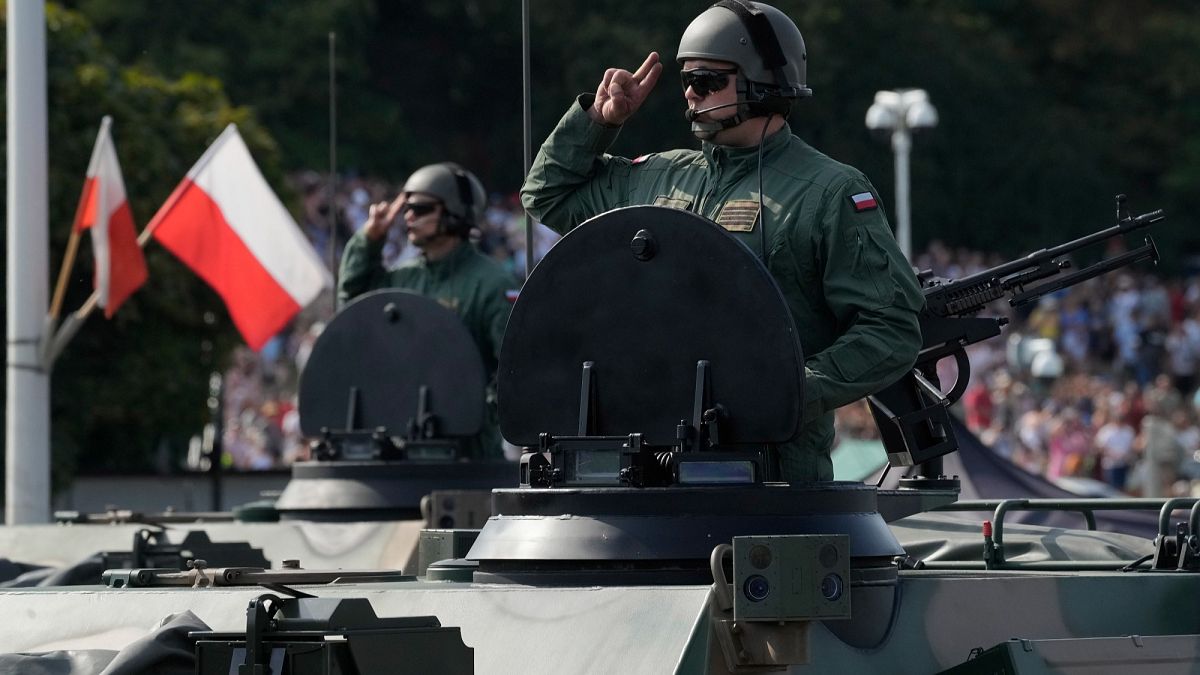Published on
The European Commission on Tuesday permitted Poland to repurpose nearly €6 billion in post-COVID funds to finance defence projects, when the college of commissioners endorsed the Polish request by written procedure.
“Poland will be the first to invest billions from the KPO (National Recovery Plan) in security and defence. Successful negotiations paved the way, now other countries are trying to follow in our footsteps,” Jan Szyszko, the country’s secretary of state in the ministry of funds and regional policy, wrote on X following the Commission’s decision.
Warsaw was allocated nearly €60bn – of which 25.3 billion are grants – of the Commission’s €650 billion plan Recovery and Resilience Facility (RRF) aimed at kickstarting COVID-stricken economies across the EU.
But the facility, which came into force in early 2021, came with strings attached.
The funds, doled out in both grants and loans, had to be poured into sectors and initiatives aimed at making the bloc’s economy more resilient, sustainable, green, and digital; member states had to submit National Recovery and Resilience Plan (NRRP) outlining reforms and investments; the money had to be spent by the end of 2026.
The funds however proved difficult for some member states to digest with bureaucratic bottlenecks, shifting political priorities, and high inflation further slowing the process.
Member states were however allowed to submit revised plans, which is what Poland did on 30 January, in which it proposed the introduction of a new measure to create an Investment-Equity injection into the Security and Defence Fund.
The Commission endorsed the measure, with a spokesperson telling Euronews that defence-related activities can align with the instrument’s objective of promoting sustainable growth and enhancing the resilience of member states provided they do not violate the limitations outlined in Article 41(2) of the Treaty on the European Union.
Article 41 regulates the financing of the Common Foreign and Security Policy, which includes the Union’s defence policy. Paragraph 2 stipulates that expenditures resulting from measures with military or defence implications are expressly excluded from financing from the EU’s budget.
“RRF support for the defence sector may include financing the expansion of industrial capacity, the technological development of defence products, as well as investments that serve both civilian and military purposes, such as transport infrastructure,” the Commission spokesperson also said.
Defence has become a key priority for the EU following Russia’s full-scale invasion of Ukraine which starkly highlighted the deficiencies and dependencies of the European defence industrial base and the glaring gaps in the bloc’s military capabilities.
The Commission has put forward a plan to unlock hundreds of billions of euros into the defence sector to fill those gaps and turbocharge European defence manufacturing. The main financial firepowers of this ‘Readiness 2030’ plan reside in more fiscal flexibility for member states and Commission-issued loans for defence projects.
But the EU executive is also backing repurposing funds from other EU programmes, such as cohesion funds, which aim to reduce economic and social disparities across the 27 member states.
Meanwhile NATO allies, of which 23 are EU member states, are currently negotiating a revision to the alliance’s defence spending target, currently set at 2% of GDP. Washington has called for a 5% target.
Read the full article here


